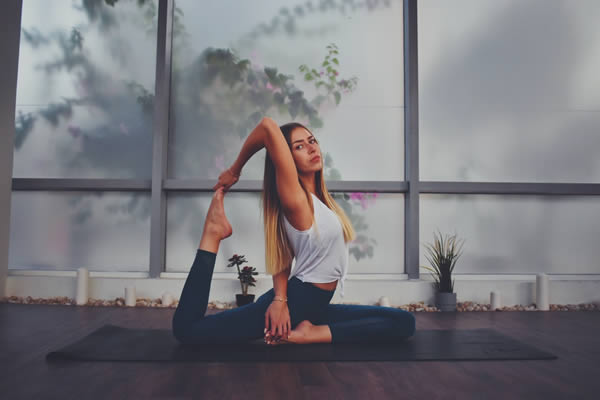
During this time of “safer at home” orders, we have been having to find more creative ways to move at home.
If you are someone that experiences urinary incontinence and/or pelvic organ prolapse you may not be going out now to see a pelvic health physical therapist to guide you through a routine. In this blog post I’m going to go over a few mat pilates exercises I like to do with patients that experience urinary incontinence and/or pelvic organ prolapse (POP). A study done in 2018 by Lausen et al, found that in the group that did mat pilates with standard physical therapy had more positive outcomes with their urinary incontinence, as well as, quality of life.
If you are unsure what urinary incontinence or pelvic organ prolapse is you can check out some previous blogs of ours (treating pelvic organ prolapse with pelvic floor therapy and preventing urinary incontinence). Before I introduce some of these exercises I want to make sure that you understand if you are experiencing pelvic pain or may be having urinary incontinence due to guarded or shortened pelvic floor muscles, you may have to begin with pelvic floor muscle lengthening/down-training first before strengthening.
Let’s get started with some of a few of my favorites…
1. Bridging (modified from shoulder bridge)
This is exercise incorporates your abdominals, pelvic floor muscles, and lower extremity muscles (i.e. glutes, hamstrings). The nice thing about this exercise for POP and urinary incontinence is that you don’t have gravity working against the pelvic floor. This can help releave some pelvic pressure with POP and allow you to focus on a strong pelvic floor contraction.
2. Leg Circles (to assist with abdominal strength and pelvic stability)
This is a great exercise to work on your abdominals and pelvic stability. The goal is to keep your pelvis from rocking while you make circles with the leg. If you feel too much tension in your hamstring (back of the thigh) you can do the same exercise with a bent knee or make smaller circles. Do what feels best in your body.
3. Leg-Pull Front (similar to a plank with movement of your lower extremity. You can modify to just holding a plank as well)
As you can see you can do modifications if movement with the lower extremity is too challenging. Holding a plank is a great way to strengthen already. I love this one because you are working the whole body and you can really focus on pelvic alignment, making sure you stay in a neutral spine, and work on long holds with the pelvic floor muscles.
Just a few tips of when doing exercises with urinary incontinence and/or pelvic organ prolapse…
-
Especially with pelvic organ prolapse, when doing an exercise if you are feeling more downward pressure onto the pelvic floor, modify the exercise (i.e. maybe you are in more of a posterior pelvic tilt versus neutral spine or maybe the exercise might be too challenging for you to hold a pelvic floor contraction, so then just modify to minimize symptoms)
-
If you are experiencing urinary leakage with an exercise, it may just be too challenging so try an easier version (i.e. if you leak with the leg-pull front then just try holding a static plank and when you become stronger try again and see if you leak). Maybe you leak at count 3. So go up to 3 a few sessions and add another rep each time. See if that changes anything.
-
Exercises lying on your back will be less challenging than those in standing because your pelvic floor muscles aren’t working against gravity. Although the goal is to get stronger to do exercises in standing because the majority of activities we do in our daily lives are in standing.
Our Pelvic Health Physical Therapists are knowledgable about pilates and incorporates it into their treatment plans. For more info on what pilates is and how it can help your pelvic floor, check out a previous blog on pilates and the pelvic floor.
References:
Lausen A, Marsland L, Head S, Jackson J, Lausen B. Modified Pilates as an adjunct to standard physiotherapy care for urinary incontinence: a mixed methods pilot for a randomised controlled trial. . 2018;18(1):16
**This information is for educational purposes only and is not intended to replace the advice of your doctor.
